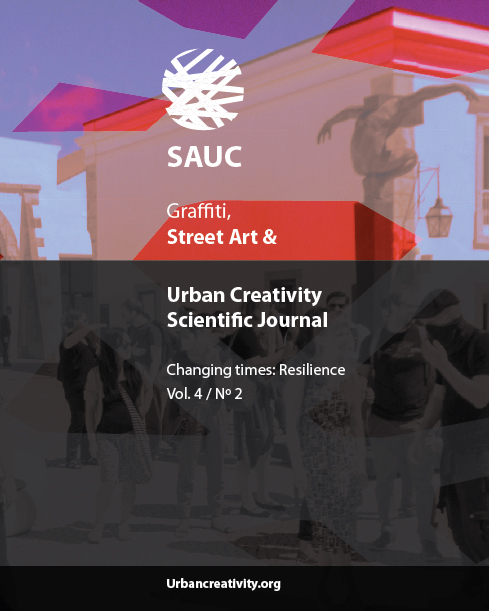A brief history of street art as a term up to 2000
DOI:
https://doi.org/10.25765/sauc.v4i2.148Keywords:
Street art, Term, Understanding, Books, Literature Search, WorldCat, Mural art, UnsanctionedAbstract
This working paper gathers the different understandings of the term “street art” found in books up to the turn of the millennium. Several opinions and theories about street art are nowadays proposed, often depending on working, cultural or geographical contexts. The idea of street art has also changed in the course of time. By a chronological analysis of the most important meanings referencing the word, the study outlines street art as a continuously changing term, with the purpose of providing an historical grounding to better frame the idea of street art today. The survey is conducted based on a literature search with the help of WorldCat (worldcat.org). The empirical material consists of printed books from 1950 to 2000 mentioning the term “street art” in their titles.
Downloads
Global Statistics ℹ️
|
234
Views
|
0
Downloads
|
|
234
Total
|
|
Downloads
Published
How to Cite
Issue
Section
License
Those authors who publish in this journal accept the following terms:
-
Authors retain copyright.
-
Authors transfer to the journal the right of first publication. The journal also owns the publishing rights.
-
All published contents are governed by an Attribution-NoDerivatives 4.0 International License.
Access the informative version and legal text of the license. By virtue of this, third parties are allowed to use what is published as long as they mention the authorship of the work and the first publication in this journal. If you transform the material, you may not distribute the modified work. -
Authors may make other independent and additional contractual arrangements for non-exclusive distribution of the version of the article published in this journal (e.g., inclusion in an institutional repository or publication in a book) as long as they clearly indicate that the work was first published in this journal.
- Authors are allowed and recommended to publish their work on the Internet (for example on institutional and personal websites), following the publication of, and referencing the journal, as this could lead to constructive exchanges and a more extensive and quick circulation of published works (see The Effect of Open Access).













